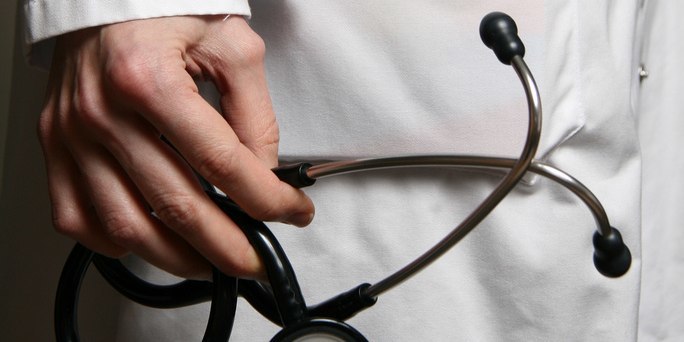Infection control rules that ban doctors from wearing long-sleeved shirts are doing nothing to reduce the spread of bugs in hospitals.
NHS staff across Tayside and Fife are ordered to wear short-sleeved shirts or roll their sleeves up above the elbow to reduce the risk of cross-infection.
However, new research from America has shown that the policy has no positive effect in reducing contamination from bugs, including MRSA.
Health boards on both sides of the River Tay ban the wearing of white coats and long-sleeved garments.
Jewellery and wristwatches are also banned. NHS Tayside’s “uniform and professional appearance policy” states the rules are in place “to reduce the risk of cross-infection.”
Neckties worn “loose or dangling” are also prohibited when providing direct patient care.
But the new study by researchers from the University of Colorado found long and short-sleeved work wear received the same amount of bacterial and MRSA contamination.
The researchers decided to assess the accuracy of the assumption that longer sleeves lead to more contamination by testing the uniforms of 100 doctors randomly assigned to wearing a freshly washed, short-sleeved uniform or a long-sleeved white coat.
“We were surprised to find no statistical difference in contamination between the short and long-sleeved work wear,” said lead researcher Marisha Burden.
“We also found bacterial contamination of newly-laundered uniforms occurs within hours of putting them on.”
Fifty doctors were asked to start the day of the trial in a standard, freshly washed, short-sleeved uniform, and 50 physicians wearing their usual long-sleeved white coats were not made aware of the trial date until shortly before the cultures were obtained, to ensure that they did not change or wash their coats.
Cultures were taken from wrists, cuffs and pockets. No significant differences were found in bacteria colony counts between each style.
The researchers also found that, although the newly laundered uniforms were nearly sterile prior to putting them on, by three hours of wear nearly 50% of the bacteria counted at eight hours were already present.
“By the end of an eight-hour work day, we found no data supporting the contention that long-sleeved white coats were more heavily contaminated than short-sleeved uniforms.
“Our data do not support discarding white coats for uniforms that are changed on a daily basis, or for requiring health care workers to avoid long-sleeved garments,” said Dr Burden.
Photo used under a Creative Commons licence courtesy of Flickr user heipei.
